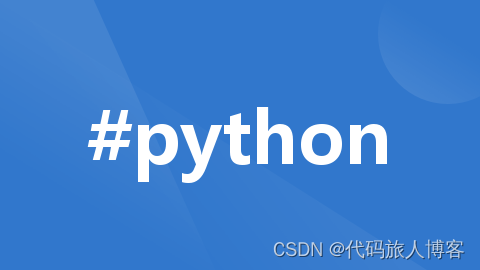
伪代码
plaintext
初始化随机数范围(例如1到100) zboubao.cn
生成一个随机数
获取用户输入的数字
当用户输入的数字不等于随机数时:
如果用户输入的数字大于随机数,输出“太大了,请再试一次。”
否则,输出“太小了,请再试一次。”
获取用户输入的数字
当用户输入的数字等于随机数时:
输出“恭喜你,你猜对了!”
结束游戏
使用不同编程语言实现
Python
python
import random
number_to_guess = random.randint(1, 100)
guess = None
while guess != number_to_guess:
guess = int(input("猜一个1到100之间的数字: "))
if guess > number_to_guess:
print(“太大了,请再试一次。”)
elif guess < number_to_guess:
print(“太小了,请再试一次。”)
print(“恭喜你,你猜对了!”)
JavaScript (在浏览器控制台或Node.js中)
javascript
let numberToGuess = Math.floor(Math.random() * 100) + 1;
let guess = null;
while (guess !== numberToGuess) {
guess = parseInt(prompt(“猜一个1到100之间的数字:”));
if (guess > numberToGuess) {
console.log(“太大了,请再试一次。”);
} else if (guess < numberToGuess) {
console.log(“太小了,请再试一次。”);
}
}
console.log(“恭喜你,你猜对了!”);
Java
java
import java.util.Random;
import java.util.Scanner;
public class GuessNumberGame {
public static void main(String[] args) {
Random rand = new Random();
int numberToGuess = rand.nextInt(100) + 1;
Scanner scanner = new Scanner(System.in);
int guess;
do {
System.out.print("猜一个1到100之间的数字: ");
guess = scanner.nextInt();
if (guess > numberToGuess) {
System.out.println("太大了,请再试一次。");
} else if (guess < numberToGuess) {
System.out.println("太小了,请再试一次。");
}
} while (guess != numberToGuess);
System.out.println("恭喜你,你猜对了!");
}
}
C++
cpp
#include
#include
#include
using namespace std;
int main() {
srand(time(0)); // 初始化随机数种子
int numberToGuess = rand() % 100 + 1;
int guess;
do {
cout << "猜一个1到100之间的数字: ";
cin >> guess;
if (guess > numberToGuess) {
cout << "太大了,请再试一次。" << endl;
} else if (guess < numberToGuess) {
cout << "太小了,请再试一次。" << endl;
}
} while (guess != numberToGuess);
cout << "恭喜你,你猜对了!" << endl;
return 0;
}
由于直接在这里提供完整的多种电脑语言的游戏代码会过于冗长,我将为您提供一个简单的“猜数字”游戏的伪代码以及使用几种流行编程语言实现的概要。
伪代码
plaintext
初始化随机数范围(例如1到100)
生成一个随机数
获取用户输入的数字
当用户输入的数字不等于随机数时:
如果用户输入的数字大于随机数,输出“太大了,请再试一次。”
否则,输出“太小了,请再试一次。”
获取用户输入的数字
当用户输入的数字等于随机数时:
输出“恭喜你,你猜对了!”
结束游戏
使用不同编程语言实现
Python
python
import random
number_to_guess = random.randint(1, 100)
guess = None
while guess != number_to_guess:
guess = int(input("猜一个1到100之间的数字: "))
if guess > number_to_guess:
print(“太大了,请再试一次。”)
elif guess < number_to_guess:
print(“太小了,请再试一次。”)
print(“恭喜你,你猜对了!”)
JavaScript (在浏览器控制台或Node.js中)
javascript
let numberToGuess = Math.floor(Math.random() * 100) + 1;
let guess = null;
while (guess !== numberToGuess) {
guess = parseInt(prompt(“猜一个1到100之间的数字:”));
if (guess > numberToGuess) {
console.log(“太大了,请再试一次。”);
} else if (guess < numberToGuess) {
console.log(“太小了,请再试一次。”);
}
}
console.log(“恭喜你,你猜对了!”);
Java
java
import java.util.Random;
import java.util.Scanner;
public class GuessNumberGame {
public static void main(String[] args) {
Random rand = new Random();
int numberToGuess = rand.nextInt(100) + 1;
Scanner scanner = new Scanner(System.in);
int guess;
do {
System.out.print("猜一个1到100之间的数字: ");
guess = scanner.nextInt();
if (guess > numberToGuess) {
System.out.println("太大了,请再试一次。");
} else if (guess < numberToGuess) {
System.out.println("太小了,请再试一次。");
}
} while (guess != numberToGuess);
System.out.println("恭喜你,你猜对了!");
}
}
C++
cpp
#include
#include
#include
using namespace std;
int main() {
srand(time(0)); // 初始化随机数种子
int numberToGuess = rand() % 100 + 1;
int guess;
do {
cout << "猜一个1到100之间的数字: ";
cin >> guess;
if (guess > numberToGuess) {
cout << "太大了,请再试一次。" << endl;
} else if (guess < numberToGuess) {
cout << "太小了,请再试一次。" << endl;
}
} while (guess != numberToGuess);
cout << "恭喜你,你猜对了!" << endl;
return 0;
}





















 557
557

 被折叠的 条评论
为什么被折叠?
被折叠的 条评论
为什么被折叠?








